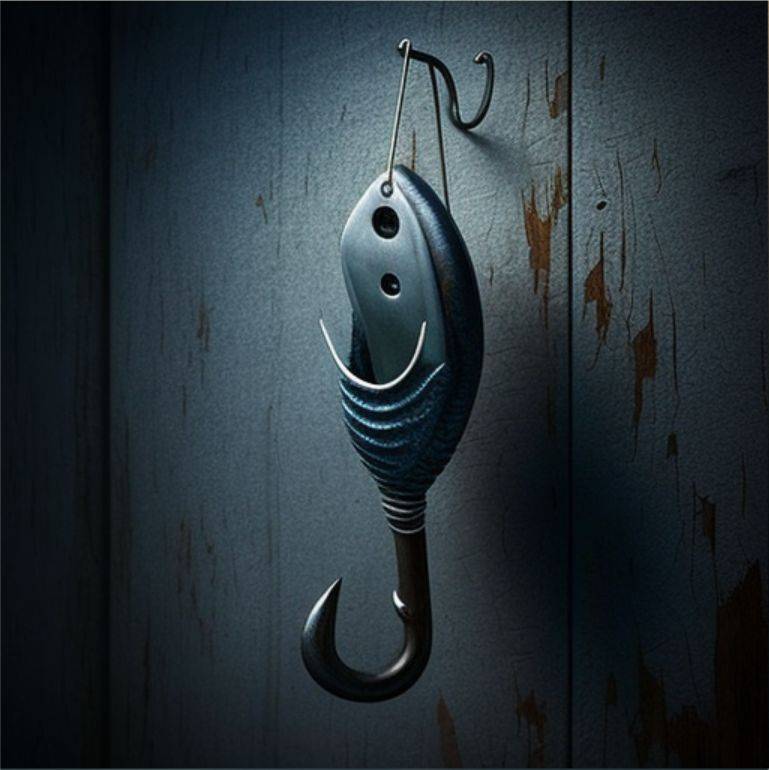
Риболовля на мормишку: підбір обладнання та техніки
One of the most popular fishing techniques is ice jig fishing, which calls for knowledge, expertise, and the appropriate gear and tactics.
Choosing the appropriate ice jig is essential first. In order to properly tempt live bait, it should be constructed from high-quality materials and have a well-designed shape. The weight and kind of fish determine the size of the ice jig, which is another crucial factor.
A larger ice jig is used for larger fish, such as perch or pike. Stronger lines and larger hooks are required for this size. It’s important to feel the water’s bottom accurately and let the ice jig to drop to the bottom. Start moving the jig to mimic the movements of live bait once it has reached the bottom. To get the fish to notice you, you have to change up the movements of the jig.
A common artificial bait for catching perch, roach, and other freshwater fish is the ice jig. It is composed of a body composed of different materials and shapes and a head with an implanted hook.
The main types of ice jigs include:
- Classic Ice Jig: A small ball-shaped head with a hook at the end, attached to a body made of artificial foam or metal.
- Balancer: An ice jig with the center of mass aligned with the hook. It moves from top to bottom, mimicking the natural movement of live bait, depending on the fish’s motion.
- Boat-shaped Jig: The hook is positioned relative to the head at a distance, providing convenient protection against bites and quick fishing results.
- Edible Ice Jig: Made from edible materials like bread or meat. This type attracts fish through scent and appearance.
Depending on the type of fish and the fishing conditions, consider size, color, and weight when selecting an ice jig. Smaller jigs with hooks sized 6-8, weighing 1-3 grams, and with green, blue, or white lining work well for perch. Red or yellow jigs work well for roach.
Metal is the most widely used material for creating ice jigs because it gives the jig enough weight and makes it sink efficiently.
Shapes and Colors of Ice Jigs
- Ice jig is one of the most versatile tools in a fisherman’s arsenal. Among different shapes, the drop-shaped ice jig is the most popular. It has a small size, compact shape, and works well for catching most fish species.
- Another common shape is the Ural, named after its place of origin. This shape is particularly suitable for fishing in currents, as the larger size of the ice jig makes it stable and capable of withstanding the flow.
- Bullet-shaped is another prevalent ice jig form. Its practicality lies in the ability to catch without bait. The puck is another shape that is popular among anglers. Its puck can be red or shiny, resembling the eye of a perch.
- Puck-shaped ice jig performs well in fishing for fish in still waters. It can lie on the bottom, which is especially relevant when catching bream or roach, which prefer to bite from the bottom.
The nymph is one of the unusual shapes of ice jigs. This ice jig is visually striking and has a particular strategy that draws fish—especially char and grayling. They eat crayfish in their normal diet, which is why this ice jig has that shape.
Thus, an important factor in capturing fish is the design of the ice jig. The sort of fish you are targeting and the fishing conditions will determine which shape is best.

Fascinating Fact: In the Kuybyshev River in Russia in 1984, a jig was used to catch the biggest pike ever recorded in history. A pike weighing 25 kg and 50 g was captured by angler Stepan Kondratiev. This record was added to the Guinness World Records and hasn’t been beaten since.






Leave a Comment
Your email address will not be published. Required fields are marked *